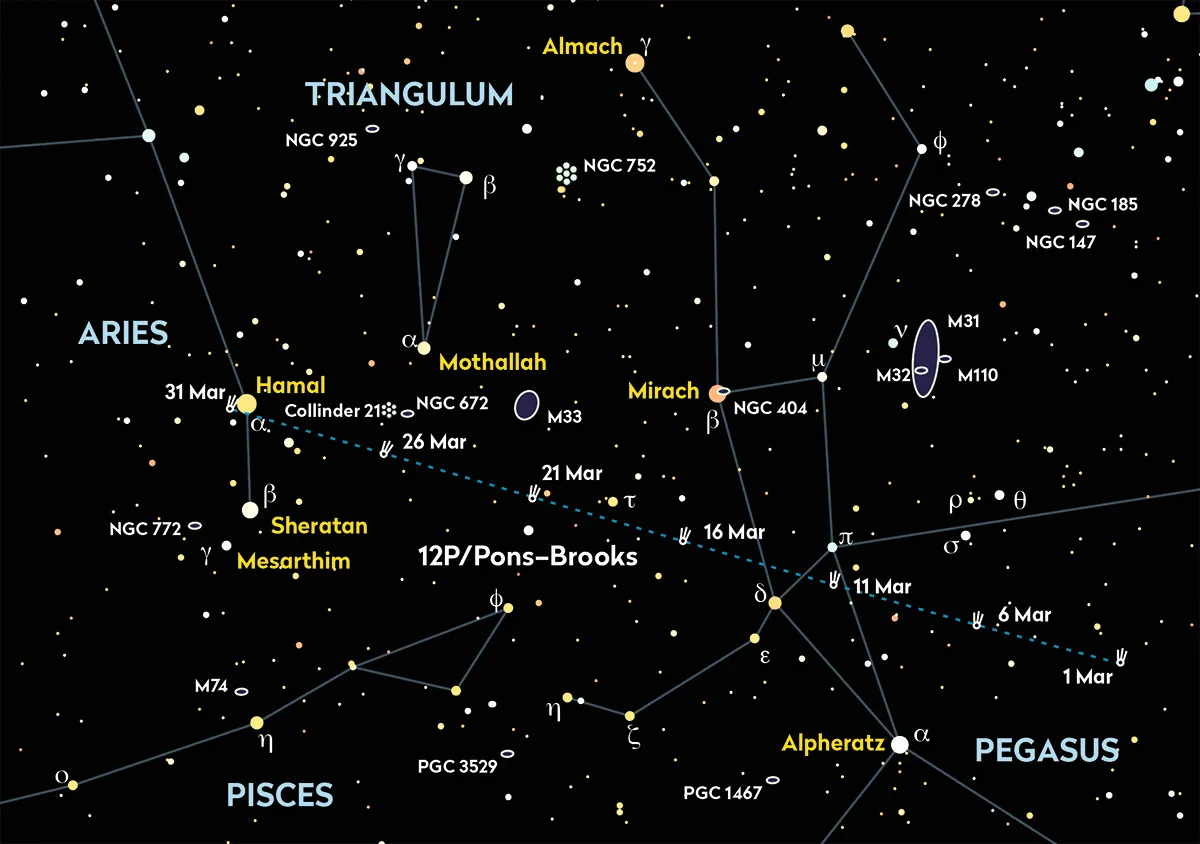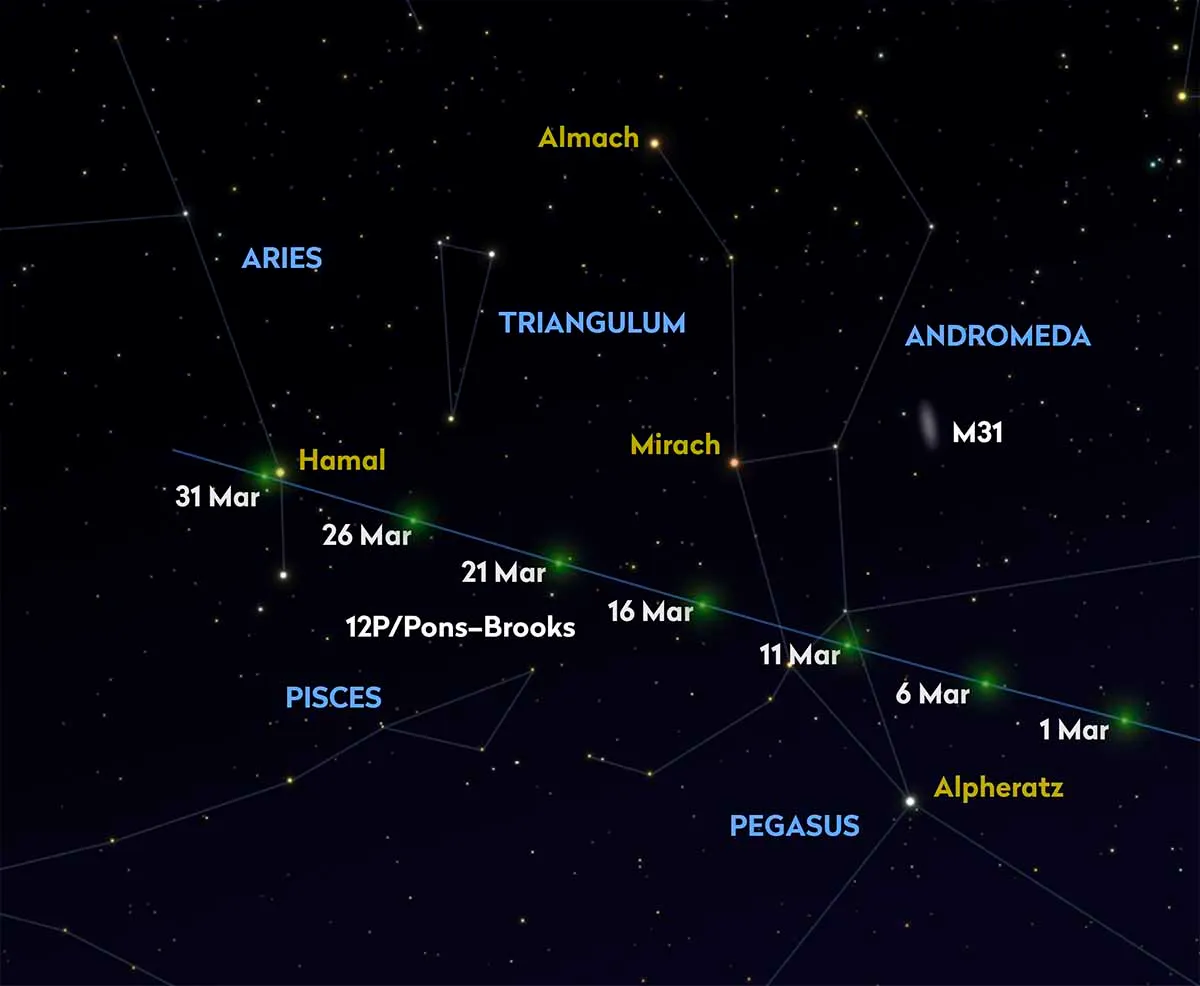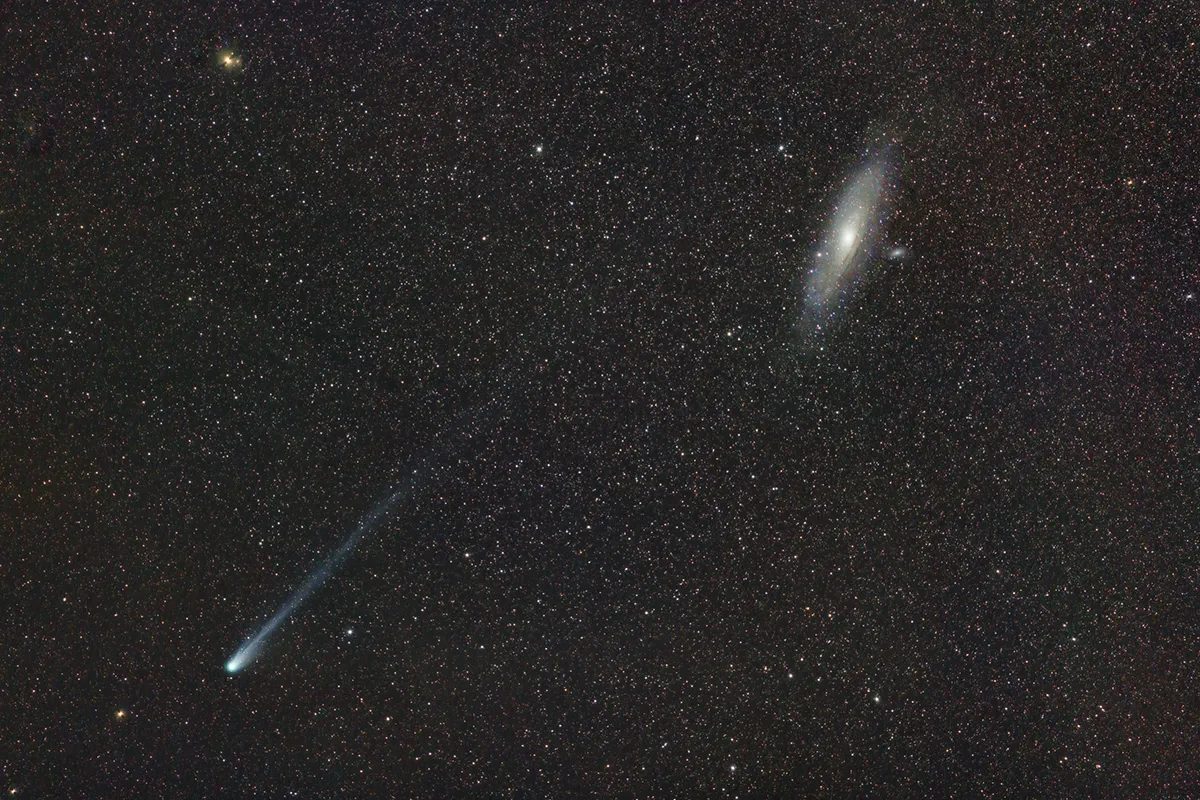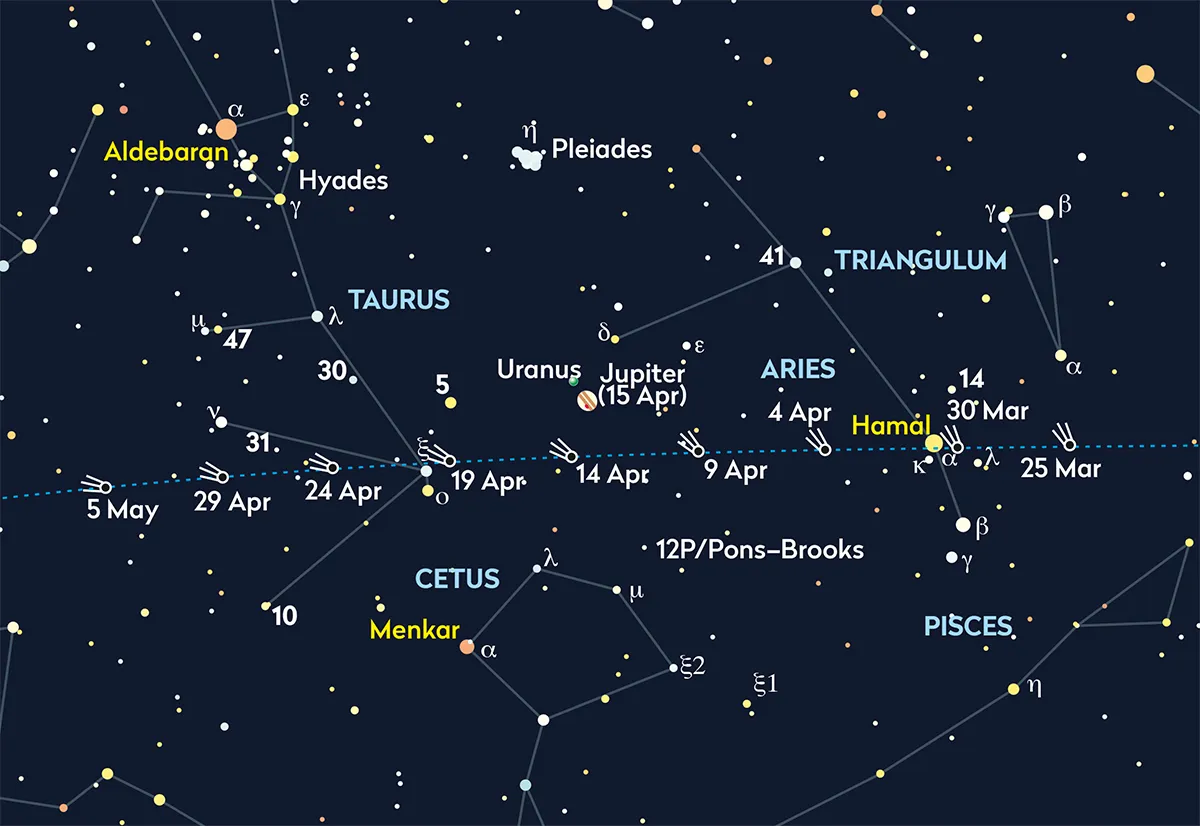Comet 12P/Pons–Brooks - known as the 'Devil Comet' - has exited the Andromeda constellation and is passing through Pisces, towards a meeting with Jupiter in the dawn sky.
Comet 12P/Pons–Brooks is one of a handful of bright comets in the sky in 2024 that have got comet-chasers and astronomers talking, and you really should seek it out before it fades in April.
Thoughts are turning to Comet 12P/Pons-Brooks reaching naked-eye territory and its conjunction with Jupiter, as well as it reaching perihelion - its closest approach to the Sun - on 21 April.
As April draws to a close, the brightening twilight will make observations quite tricky.
There’s a bit of cosmic balance at play too, because whereas C/2021 S3 PanSTARRS is best in the early morning sky, 12P is one comet that's best in the evening sky.
Find out what comets and asteroids are in the sky tonight

Comet 12P/Pons–Brooks - the story so far
As its name suggests, Comet 12P was the 12th comet to have the periodic nature of its orbit calculated. Its orbital period is 71 years.
The comet was heavily observed in 2023 and was seen to undergo an outburst on 20 July of that year, brightening by 100 times to 12th magnitude.
It showed an interesting change in appearance at this time too: a definite horseshoe-shaped coma that some likened to the shape of the Millennium Falcon from Star Wars.
Another outburst occurred on 5 October 2023 and then again in late November.
Comet 12P/Pons–Brooks’ orbit is highly inclined at 74.2°.
At aphelion, when it's furthest from the Sun, the comet moves to a position 33.6 AU from the Sun, which is just further out than the orbit of Neptune.
At perihelion, when it's closest to the Sun, it moves to a position slightly further out than the orbit of Venus, at 0.8 AU.
March key dates

Comet 12P/Pons–Brooks started its track in March just north of the Great Square of Pegasus, technically within the constellation Andromeda.
As the sky gets properly dark from the centre of the UK, it’ll be approximately 24° above the west-northwestern horizon.
The comet is heading southeast, brightening as it goes.
On 12 March, Comet 12P/Pons–Brooks was just shy of 2° north of mag. +3.2 Delta (δ) Andromedae, zipping past this star before exiting Andromeda and entering Pisces just before midnight on 14 March.

It then passed through the ill-defined northern fish of Pisces, tracking southeast to arrive at a position close to mag. +2.0 Hamal (Alpha (α) Arietis).
On the evening of 31 March, comet 12P/Pons–Brooks lay less than half a degree from this star.
The expanding evening twilight is causing issues as of the end of March, Hamal being just 10° above the west-northwestern horizon as true darkness falls.

Moon and planets
The Moon moves through the region mid-month, but as a thin waxing crescent it shouldn’t become an issue until 18 March, moving out of the way again around 26 March.
Comet 12P/Pons–Brooks will have bright Jupiter and less bright Uranus nearby, especially towards the end of the month.

With the Andromeda Galaxy on the table too, there was an opportunity for capturing a stunning astrophoto of the scene.
José J. Chambo managed to capture a wonderful image of Comet 12P/Pons-Brooks and the Andromeda Galaxy.
You can find out more about how to do this in our guide on how to photograph a comet.
Comet Pons-Brooks April key dates

Comet 12P/Pons–Brooks' brightness is expected to increase slightly throughout April, but will disappear due to the rapid expansion of evening twilight.
This means your best chance of spotting it will be at the start of the month.
12P/Pons–Brooks is predicted to be in naked-eye territory in April: mag. +4.8 on 1 April and around +4.1 at the time of perihelion on 21 April.

Interestingly, on 8 April the comet lies 25° from the Sun, offering an opportunity to observe or image it from locations that experience the total solar eclipse on that day.
The comet lies very close to the star Hamal (Alpha (α) Arietis) on 31 March and 1 April, passing the star at 12:00 BST (11:00 UT) on 31 March by 6.5 arcseconds.
On 1 April, the comet is around 10° up above the west-northwest horizon as true darkness falls.
Its monthly track takes it close to Jupiter mid-month, although evening twilight will make this encounter harder to see.
Have you managed to observe or even photograph Comet 12P/ Pons–Brooks? Let us know by emailing contactus@skyatnightmagazine.com

